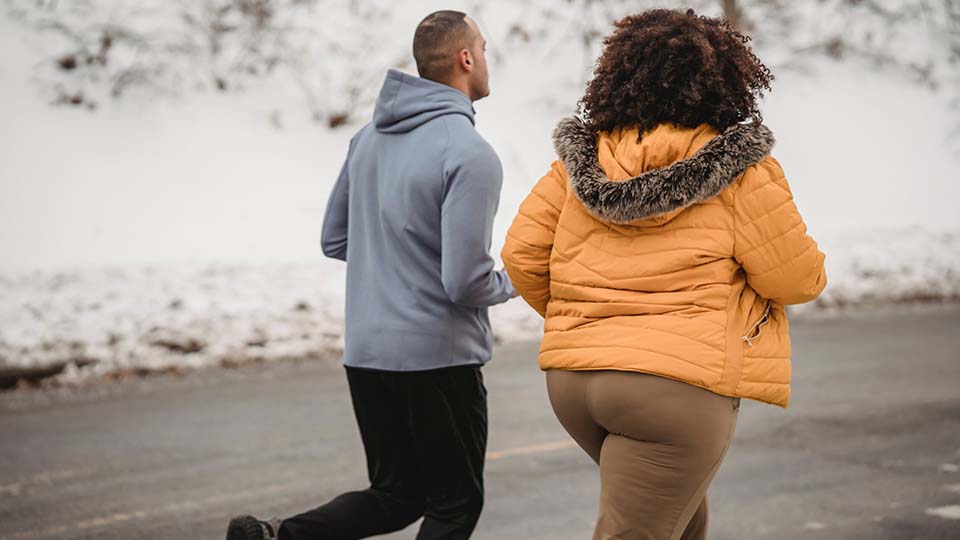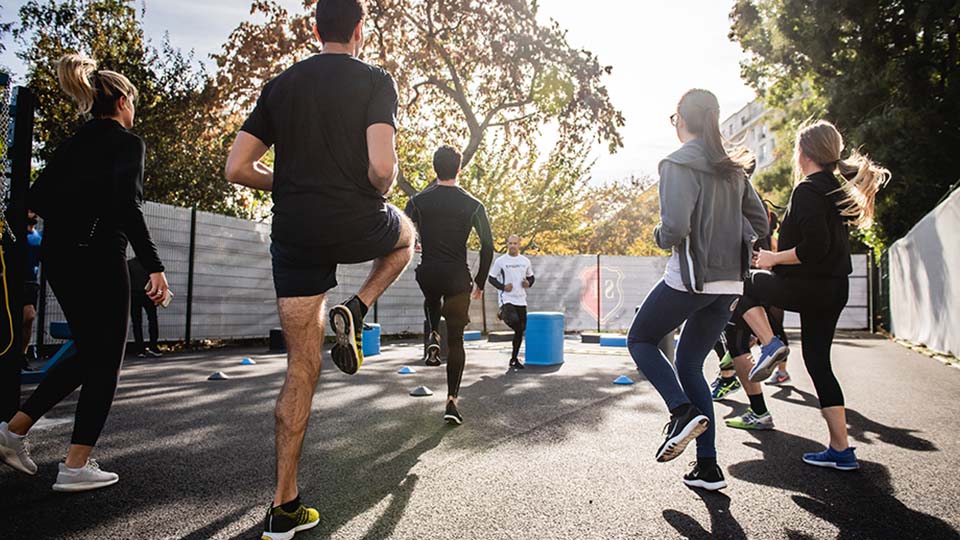Your cart is currently empty!


If doing more exercise is one of your new year’s resolutions, then popping on your trainers and heading outside for a run is perhaps the easiest way to get started.
With such cold weather, running in winter may seem unappealing at first. The treadmill may feel like a safer – not to mention warmer – experience.
Yet a brisk run in chilly conditions may be just what the doctor ordered.
Running in cold weather can be extremely beneficial for your well-being For starters, cold temperatures can help reduce the severity of depression, while training in the cold can deliver a better cardiovascular workout as your system is forced to work harder. Running in cold weather can also bring the benefit of a potentially greater calorie burn, as concluded in this study.
However, running in winter has its fair share of hazards, meaning you should approach it differently from a regular run. In this article, we explore how to get the best out of your cold-weather run this winter.

Don’t overlook a good warm up
Warming up before you head out for a run is important all year round, but it becomes imperative when running in cold weather.
As you have probably experienced, your muscles become stiff when they are cold and more flexible when warm. Therefore, increasing blood flow into the involved muscles and raising their temperature through a warm-up will lower the risk of an injury when running in cold weather.
A quick YouTube search will unearth countless warmup videos for inspiration, although keep it simple. Some dynamic stretching such as leg swings, hip thrusts and walking lunges will usually suffice. You can follow this by throwing in some high-energy moves like jumping jacks to help warm your entire body before setting out into the icy air.
However, don’t go too hard on the warm up, as creating sweat at this stage will cool you down further as you step outside.
Wrap up warm
While only a handful of people may run in the cold with minimal clothing, running in your thick fleecy winter jacket will be just as uncomfortable. But there is another way to keep warm while running in cold weather – thermal running gear, such as base layers, leggings, hats and gloves.
When buying thermal running clothing, there are a few rules to pay attention to.
Firstly, aim to wear things that still allow you to feel a little cold as you head outside. That advice may sound strange, but as you begin running you will warm up quickly.
Wear a breathable base layer that sits close to the skin, which will trap warmth from your body and wick away moisture. Combine this with a light jacket and some running gloves for temperatures of around 4°C to 10°C. As temperatures drop below 4°C you should add a hat and a thicker jacket for extra warmth.
Concentrate on the road
While running, it can be tempting to pop on your headphones and immerse yourself in a world of epic tunes, while spending time looking at your smartwatch for feedback on your pace and distance.
But be careful. Running in winter is more perilous than any other time of the year, with poor visibility, heavy winds and icy pavements all threatening to trip you up – literally. Even if you have run the route hundreds of times, the ground changes dramatically in winter.
So, concentrate on your running, and keep distractions to a minimum. Pay attention to where you are placing your feet and what’s ahead of you, and you are less likely to fall victim to a twisted ankle thanks to a patch of slippery grass.

Prioritize recovery
As you finish your run, having successfully avoided icy slips and pulled muscles, it’s time to prioritize recovery.
Firstly, take on adequate protein, carbohydrates and water to kickstart the internal recovery process. A protein shake and some fruit should suffice.
Then look at what you can do for your body from the outside.
A cold shower or ice bath is seen as the best course of action immediately after a run, to help decrease inflammation in the body. To treat muscle and joint pain, try rubbing on a little of our Relief Balm – an award-winning, highly-tested balm featuring 12 evidence-based, natural ingredients that help soothe sore muscles and joints.
The following day, you can treat yourself to a long soak in a warm bath, which will promote blood flow to the muscles and increase circulation, which will aid healing. Enjoying a hot bath also has potential benefits to your cardiovascular health.
Add in two or three handfuls of our Relief Salts for a real recovery boost. These Epsom salts are infused with uplifting essential oils such as frankincense and eucalyptus, with the added recovery properties of cannabis and arnica.
The takeaway of this article is to be careful! Wherever you run this winter, warm up properly, focus on the run, then recover like a pro.